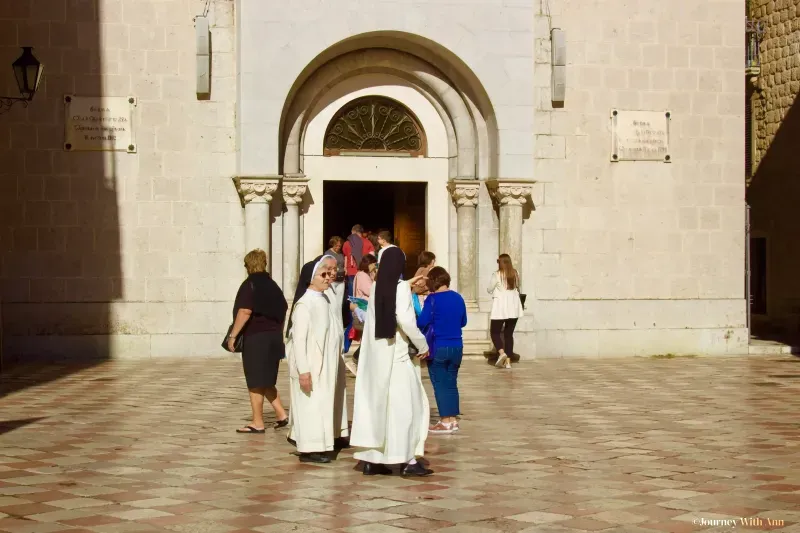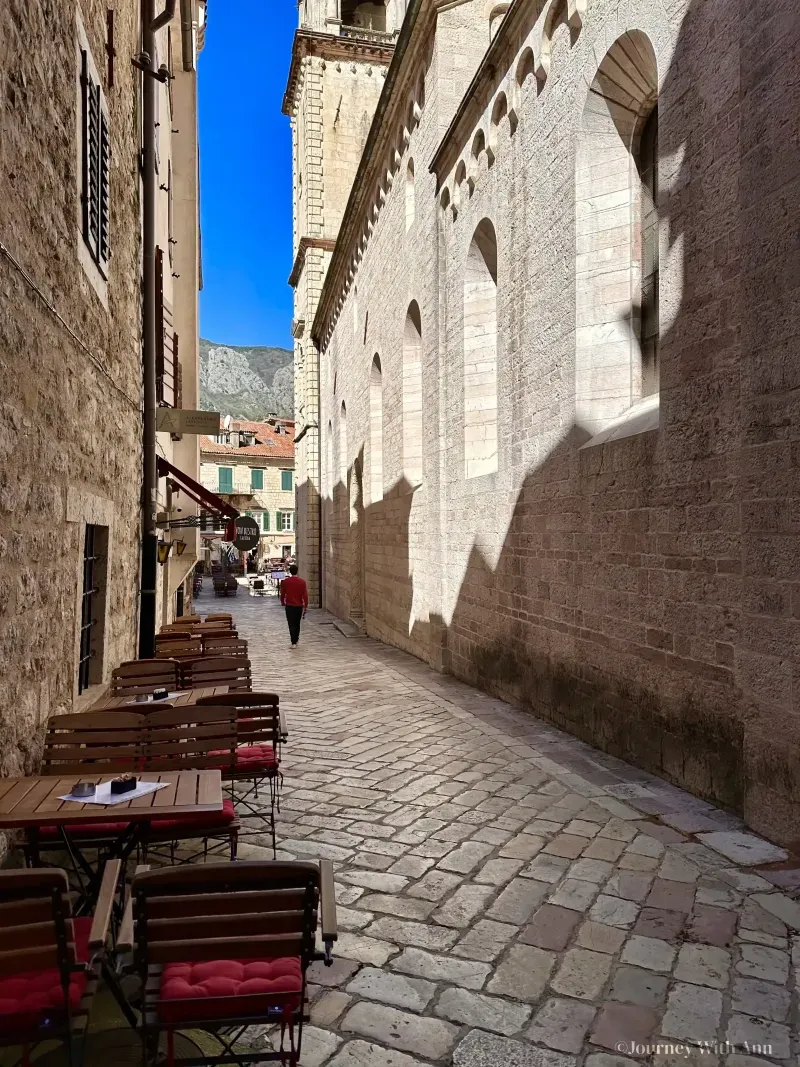Geographical Setting and Historical Overview
The Old Town of Kotor is strikingly set against the towering Mount Lovcen, creating a stunning visual contrast between the serene blue of the Adriatic Sea and the rugged gray tones of the mountainous terrain. The town itself is built along the mountain's slopes, with architecture and streets cleverly adapted to the complex topography. The city walls climb the mountain to an elevation of up to 280 meters, offering not only a defensive advantage in ancient times but also panoramic views of the Bay of Kotor, one of the most indented parts of the Adriatic Sea. This mountain serves as a breathtaking backdrop for the Old Town, and the fortifications present a challenging yet rewarding hike for those who dare to undertake it. The Old Town of Kotor is located in the central part of the city and is the most vibrant area, home to the best spots, photo locations, and popular cafes and restaurants. This UNESCO World Heritage site is easy to find as you explore the city, but for your convenience, I’ve included its location on the map below. With the help of the map, you’ll find it even easier to get there from your accommodation.

St. John's Fortress.
St. John's Fortress is one of the key attractions when visiting the Old Town of Kotor. Travelers arrive here from all over the world, whether by cruise ship or car. However, many people underestimate the challenge and the preparation required to climb to this historic site. The lack of firsthand information often leaves visitors unprepared, leading to disappointment during their journey. To assist travelers, my blog provides plenty of valuable insights, including tips on how to directions to Old Town, how much time is needed to ascend St. John's Fortress, and practical recommendations. You’ll also find advice on the best time to visit Kotor or Montenegro as a whole, and much more. This will help you better prepare for your trip, plan the most efficient itinerary, and fully enjoy your adventure to the fortress and beyond!



Architectural and Cultural Highlights
The architecture in Kotor Old Town is a testament to its rich history, with influences from Roman, Byzantine, Venetian, and Austro-Hungarian periods. The town's walls, which date back to the 9th century, have been expanded and reinforced over the centuries, especially during the Venetian rule from the 15th to the 18th century, which is considered the golden age of Kotor. This Venetian influence is most evident in the Old Town's architectural style, with its characteristic red-tiled roofs, baroque buildings, and narrow, labyrinthine streets. One of the most iconic architectural landmarks of Kotor is the Cathedral of Saint Tryphon, dating back to 1166. This cathedral houses an impressive collection of art and artifacts that reflect the city's historical and cultural evolution. Beyond its architectural marvels, Kotor is also known for its vibrant cultural life. The city hosts numerous festivals and events throughout the year, including the famous Kotor Carnival and the KotorArt International Music Festival, which attract visitors from around the globe, keen to experience the unique blend of historical ambiance and contemporary cultural offerings.

A UNESCO World Heritage Site
Kotor's inclusion as a UNESCO World Heritage site underscores its global significance, protecting its unique cultural and historical heritage for future generations. This designation not only highlights the importance of preserving such sites but also encourages sustainable tourism practices that respect the area's environmental and cultural integrity. Exploring Kotor Old Town and its fortifications offers an unforgettable experience, blending physical challenge with cultural enrichment. The city's rich history, combined with its stunning natural environment, makes Kotor a captivating destination that inspires further exploration of Montenegro's diverse landscapes and heritage. Whether scaling the ancient fortifications, wandering through the narrow streets of the Old Town, or savoring national eats and a traditional drink, Kotor offers some of the best things to experience in this popular place, leaving visitors eager to explore more of this beautiful country. But few people know in advance that you can not only stroll through Kotor’s Old Town but also stay there.

Conclusion
Kotor Old Town’s stunning landscape, historical depth, and vibrant cultural scene make it a compelling destination for travelers seeking to immerse themselves in the essence of the Mediterranean's past and present. A visit to Kotor not only satiates the curiosity about Montenegro's history but also ignites a desire to explore more of this beautiful country and its diverse offerings. Whether it's the allure of ancient walls whispering stories of the past, the stunning natural beauty of the bay and mountains, the enticing restaurants of the Old Town offering local culinary delights, or the warm, welcoming culture of its people, Kotor beckons travelers with the promise of unforgettable experiences. This town, known as one of the best places for families, solo travelers, men, and women alike, stands out as a popular and safe location for tourists. With guides readily available to explore the best areas and top attractions, Kotor offers not only a safe travel experience but also the chance to enjoy the best things, including national eats and traditional drinks, while connecting deeply with Montenegro’s heritage. It’s important to know that the Old Town of Kotor is a pedestrian-only area, which means that if you’re arriving by your own vehicle, you’ll need to arrange for parking elsewhere in the city.



